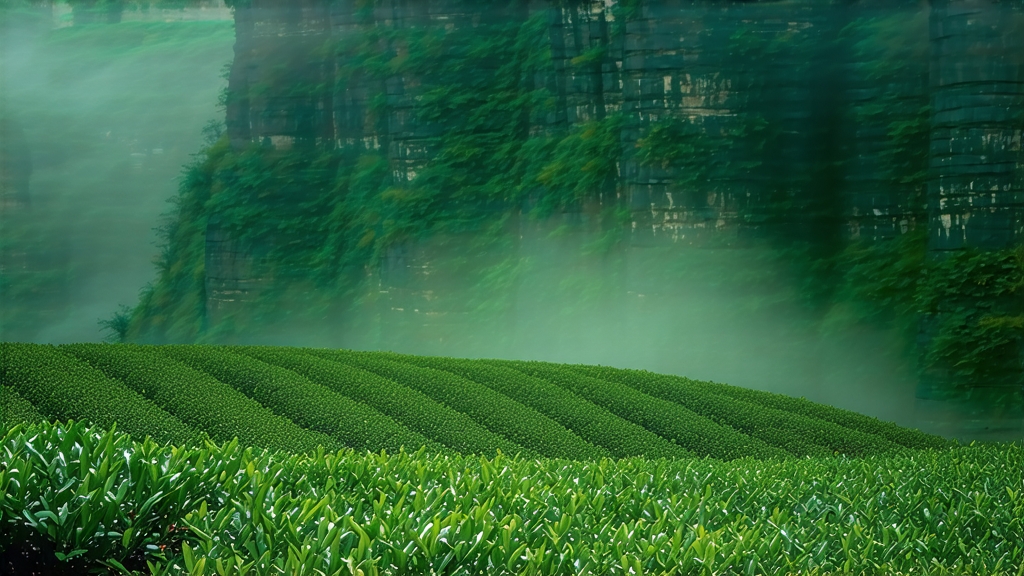
If green tea is the fresh-faced scholar of Chinese teas and pu-erh the venerable sage, then Da Hong Pao—Big Red Robe—stands as the battle-scarred warrior-poet: weathered by centuries of mountain storms, yet still reciting verses of orchid, honey and volcanic stone in every cup. Hailing from the vertiginous Wuyi Mountains of northern Fujian, this most celebrated of rock oolongs (yancha) carries a legend as dramatic as the 45-degree cliff faces on which it grows. According to Ming-dynasty lore, a scholar on his way to the imperial exams fell violently ill near the Tianxin Yongle Zen temple. Monks brewed leaves plucked from six ancient bushes clinging to Jiulongke ravine; the scholar recovered, passed the exams with top honors, and returned in gratitude draped in the crimson silk robe awarded by the emperor—hence the name “Big Red Robe.” Whether myth or marketing, the tale cemented the tea’s status as imperial tribute, and today those original mother trees, now protected by the state, are visited by pilgrims who photograph the scarred rock face more often than they taste the leaf.
Yet Da Hong Pao is not a single tree but a style, a geological signature, a choreography of fire and time. Broadly it is divided into three market tiers. Qidan (Pure-Red) comes from cuttings of the mother bushes, vegetatively propagated since the 1980s; it offers the closest genetic echo of the original, typically showing the clearest “rock rhyme” (yanyun)—the lingering mineral hum that connoisseurs liken to wet slate after a summer storm. Beidou (North-Star) is a separate clonal selection made from the same gene pool in the 1960s by the Wuyi Tea Research Institute; it tends toward deeper cocoa notes and a broader, creamier body. The third, and by far the most common, is commercial-grade Da Hong Pao: a skillful blend of several Wuyi cultivars—Rougui for spice, Shui Xian for floral heft, perhaps a whisper of rare Huang Guan Yin to lift the aromatics—designed to hit the price point of daily drinkers while still delivering the signature charcoal warmth and cliff-stone finish. Regardless of tier, true Wuyi yancha must grow within the 60 km² UNESCO core zone where tuff, rhyolite and granite weather into a thin, fast-draining soil that stresses the bushes, concentrating polyphenols and amino acids.
The crafting of Da Hong Pao is a twelve-step epic that begins under starlight. Pickers climb bamboo ladders lashed to the cliff at 3 a.m. when dew is still heavy, selecting the standard “zhong kai mian” three-leaf set—mature enough for complex chemistry yet tender enough for elegance. By dawn the leaves arrive at the cottage courtyard for solar withering, spread on bamboo mats angled toward the rising sun; the goal is to drive off surface moisture while allowing internal enzymes to awaken. Two hours later the leaf is carried indoors for yaoqing, the “rocking-green” phase unique to Minbei oolongs: it is tossed in a rattan drum rotating at 18 rpm, bruising the edges against the ribs just enough to liberate aromatic precursors without macerating the leaf. Oxidation proceeds in thin layers on woven trays in a humid 26 °C room; the tea master sniffs every fifteen minutes, waiting for the moment when grassy top notes yield to peach and copper. At roughly 40 % oxidation—halfway to black—he fires the leaf in a 200 °c rolling drum for 90 seconds, arresting the enzymes while locking in a maroon-green gradient that looks like oxidized iron ore.
What follows is the step that separates Wuyi craftsmen from all other oolong makers: the charcoal roast, lao huo. Traditionally the tea is loaded into 8 cm-thick bamboo sieves and placed over a pit of glowing lychee-wood embers whose heat has been mellowed by a 3 cm blanket of ash. The first roast lasts eight hours; the tea is left to rest for forty days so that residual moisture migrates outward, then roasted again—up to four cycles across half a year. Each cycle drops the leaf’s moisture by roughly 2 % while pyrolyzing sugars